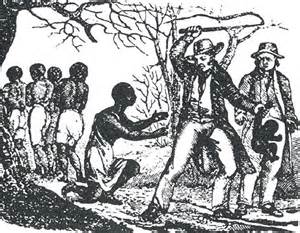“The Cross and the Lynching Tree are separated by nearly two thousand years,” James Cone writes in his new book, “The Cross and the Lynching Tree.” “One is the universal symbol of the Christian faith; the other is the quintessential symbol of black oppression in America. Though both are symbols of death, one represents a message of hope and salvation, while the other signifies the negation of that message by white supremacy. Despite the obvious similarities between Jesus’ death on the cross and the death of thousands of black men and women strung up to die on a lamppost or tree, relatively few people, apart from the black poets, novelists, and other reality-seeing artists, have explored the symbolic connections.
Yet, I believe this is the challenge we must face. What is at stake is the credibility and the promise of the Christian gospel and the hope that we may heal the wounds of racial violence that continue to divide our churches and our society.”
To read a review by Mel White of “The Cross and the Lynching Tree” in Truthdig, click here.
So begins James Cone, perhaps the most important contemporary theologian in America, who has spent a lifetime pointing out the hypocrisy and mendacity of the white church and white-dominated society while lifting up and exalting the voices of the oppressed. He writes out of his experience as an African-American growing up in segregated Arkansas and his close association with the Black Power movement. But what is more important is that he writes out of a deep religious conviction, one I share, that the true power of the Christian gospel is its unambiguous call for liberation from forces of oppression and for a fierce and uncompromising condemnation of all who oppress.
Cone, who teaches at Union Theological Seminary in New York City, writes on behalf of all those whom the Salvadoran theologian and martyr Ignacio Ellacuría called “the crucified peoples of history.” He writes for the forgotten and abused, the marginalized and the despised. He writes for those who are penniless, jobless, landless and without political or social power. He writes for gays, lesbians, bisexuals and those who are transgender. He writes for undocumented farmworkers toiling in misery in the nation’s agricultural fields. He writes for Muslims who live under the terror of war and empire in Iraq and Afghanistan. And he writes for us. He understands that until white Americans can see the cross and the lynching tree together, “until we can identify Christ with a ‘recrucified’ black-body hanging from a lynching tree, there can be no genuine understanding of Christian identity in America, and no deliverance from the brutal legacy of slavery and white supremacy.”
“In the deepest sense, I’ve been writing this book all my life,” he said of “The Cross and the Lynching Tree” when we spoke recently. “I put my whole being into it. And did not hold anything back. I didn’t choose to write it. It chose me.
“I started reading about lynching, and reading about the historical situation of the crosses in Rome in the time of Jesus, and then my question was how did African-Americans survive and resist the lynching terror. How did they do it? [Nearly 5,000 African-American men, women and children were lynched in the United States between 1880 and 1940.] To live every day under the terror of death. I grew up in Arkansas. I know something about that. I watched my mother and father deal with that. But the moment I read about it, historically, I had to ask, how did they survive, how did they keep their sanity in the midst of that terror? And I discovered it was the cross. It was their faith in that cross, that if God was with Jesus, God must be with us, because we’re up on the cross too. And then the other question was, how could white Christians, who say they believe that Jesus died on the cross to save them, how could they then turn around and put blacks on crosses and crucify them just like the Romans crucified Jesus? That was an amazing paradox to me. Here African-Americans used faith to survive and resist, and fight, while whites used faith in order to terrorize black people. Two communities. Both Christian. Living in the same faith. Whites did lynchings on church grounds. How could they do it? That’s where [my] passion came from. That’s where the paradox came from. That’s where the wrestling came from.
“Many Christians embrace the conviction that Jesus died on the cross to redeem humankind from sin,” he said. “Taking our place, they say, Jesus suffered on the cross and gave his life as a ransom for many. The cross is the great symbol of the Christian narrative of salvation. Unfortunately, during the course of 2,000 years of Christian history, the symbol of salvation has been detached from the ongoing suffering and oppression of human beings, the crucified people of history. The cross has been transformed into a harmless, non-offensive ornament that Christians wear around their necks. Rather than reminding us of the cost of discipleship, it has become a form of cheap grace, an easy way to salvation that doesn’t force us to confront the power of Christ’s message and mission.”
Cone’s chapter on Reinhold Niebuhr, the most important Christian social ethicist of the 20th century and a theologian whose work Cone teaches, exposes Niebuhr’s blindness to and tacit complicity in white oppression. Slavery, segregation and the terror of lynching have little or no place in the theological reflections of Niebuhr or any other white theologian. Niebuhr, as Cone points out, had little empathy for those subjugated by white colonialists. Niebuhr claimed that North America was a “virgin continent when the Anglo-Saxons came, with a few Indians in a primitive state of culture.” He saw America as being elected by God for the expansion of empire and, as Cone points out, “he wrote about Arabs of Palestine and people of color in the Third World in a similar manner, offering moral justification for colonialism.”
Cone reprints a radio dialogue between Niebuhr and writer James Baldwin that took place after the September 1963 bombing of the 16th Street Baptist Church in Birmingham, Ala., that killed four girls. Niebuhr, who spoke in the language of moderation that infuriated figures like Martin Luther King Jr. and Baldwin, was disarmed by Baldwin’s eloquence and fire.
Baldwin said:
The only people in this country at the moment who believe either in Christianity or in the country are the most despised minority in it. … It is ironical … the people who were slaves here, the most beaten and despised people here … should be at this moment … the only hope this country has. It doesn’t have any other. None of the descendants of Europe seem to be able to do, or have taken it on themselves to do, what Negros are now trying to do. And this is not a chauvinistic or racial outlook. It probably has something to do with the nature of life itself. It forces you, in any extremity, any extreme, to discover what you really live by, whereas most Americans have been for so long, so safe and so sleepy, that they don’t any longer have any real sense of what they live by. I think they really think it may be Coca-Cola.
“If Niebuhr could ignore it, there must be something defective in that faith itself,” Cone said. “If it weren’t defective, then they wouldn’t put black people on crosses. Niebuhr wouldn’t have been silent about it. I look around and see the same thing happening today in the prison industrial complex. You can lynch people by more than just hanging them on the tree. You can incarcerate them. How long will this terror last? I’m Christian. Suffering gives rise to faith. It helps you deal with it. But at the same time, suffering contradicts the faith that it gave rise to. It is like Jacob wrestling with the angel. I can’t give up with the wrestling.”
 Mouood Mouood English Edition
Mouood Mouood English Edition




